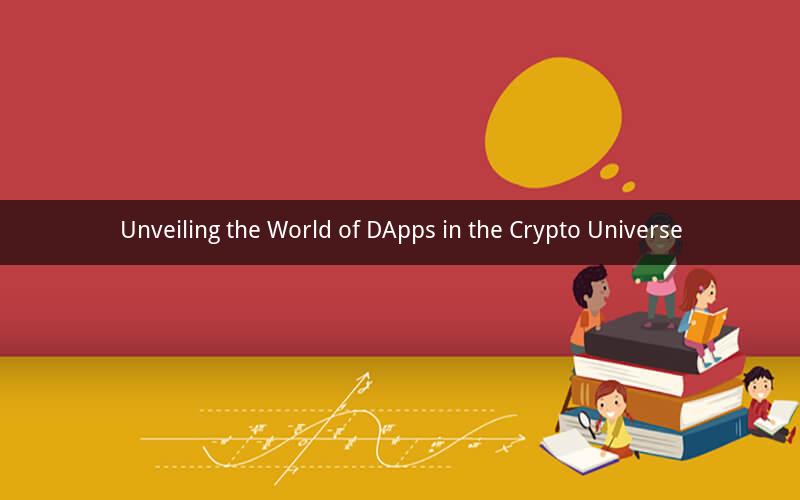
DApps, or decentralized applications, have emerged as a pivotal innovation in the crypto sphere. They represent a new era of digital services that are not controlled by any single entity but rather by a network of participants. In this article, we will explore what DApps are, how they function, and their significance in the crypto ecosystem.
What Are DApps?
DApps are software applications that run on a decentralized network, typically powered by blockchain technology. Unlike traditional applications that are hosted on centralized servers, DApps operate on a peer-to-peer network, making them resistant to censorship and control by any single entity. The decentralized nature of DApps ensures that they are transparent, secure, and immutable.
How Do DApps Work?
DApps operate through smart contracts, which are self-executing contracts with the terms of the agreement directly written into lines of code. These smart contracts are stored on a blockchain, a decentralized ledger that records all transactions across the network. When a user interacts with a DApp, the smart contract executes the desired function and updates the blockchain accordingly.
The key components of a DApp include:
1. User Interface (UI): The front-end of the DApp, which allows users to interact with the application.
2. Smart Contracts: The back-end of the DApp, which contains the logic and rules for executing transactions.
3. Blockchain: The decentralized ledger that stores all transactions and smart contract data.
Significance of DApps in the Crypto Ecosystem
DApps have several advantages over traditional applications, making them a significant innovation in the crypto space:
1. Decentralization: DApps eliminate the need for a central authority, ensuring that power is distributed among network participants.
2. Transparency: All transactions and smart contract data are recorded on the blockchain, making DApps transparent and immutable.
3. Security: The decentralized nature of DApps and the use of blockchain technology make them highly secure against hacking and fraud.
4. Innovation: DApps enable the creation of new digital services and business models that were not possible with traditional applications.
Popular DApps
Several DApps have gained popularity in the crypto community, showcasing the potential of decentralized applications:
1. Ethereum: The most popular platform for DApps, offering a versatile environment for developers to build and deploy their applications.
2. EOS: A high-performance blockchain platform that supports DApps with fast and scalable solutions.
3. Tron: A decentralized platform that aims to provide a seamless user experience for DApps, focusing on entertainment and social media applications.
4. Cardano: A blockchain platform that promotes sustainability and scalability, making it suitable for DApps that require large-scale operations.
5. Tezos: A self-amending blockchain that enables DApps to evolve and adapt over time.
Challenges and Future of DApps
While DApps offer numerous benefits, they also face several challenges:
1. Scalability: Many DApps struggle to handle high transaction volumes, leading to network congestion and high fees.
2. User Experience: The decentralized nature of DApps can sometimes result in a less user-friendly experience compared to traditional applications.
3. Regulatory Hurdles: The evolving regulatory landscape poses challenges for DApps, particularly in terms of compliance and user protection.
Despite these challenges, the future of DApps looks promising. As blockchain technology continues to evolve, we can expect to see more efficient and user-friendly DApps that cater to a wider audience.
Frequently Asked Questions
1. What is the difference between a DApp and a traditional app?
- A DApp operates on a decentralized network, while a traditional app is hosted on centralized servers. DApps offer greater transparency, security, and decentralization.
2. Can DApps be hacked?
- While DApps are generally more secure than traditional applications, they are not immune to hacking. However, the decentralized nature of DApps makes it difficult for hackers to compromise the entire network.
3. How do DApps make money?
- DApps can generate revenue through various means, such as transaction fees, subscription models, and in-app purchases. They can also tokenize their services, allowing users to earn rewards or access exclusive features.
4. Are DApps regulated?
- The regulatory status of DApps varies by country and jurisdiction. Some governments have implemented regulations to protect users, while others have yet to address the issue.
5. What is the future of DApps?
- The future of DApps looks promising, with ongoing advancements in blockchain technology and increased adoption of decentralized services. As more users and developers embrace DApps, we can expect to see a wide range of innovative applications and services in the crypto ecosystem.